Review by Pete Vack
As noted last month, we have a lot of new books (10 total) to review, most of which arrived at approximately the same time. So, among equals, where do we begin?
We’ve been collecting books on Alfa for a long time, the earliest being the Alfa Romeo Guide by Keith Ayling, Sports Car Press, 1964. The word jaded here would not be inappropriate. Yet when we opened Volume 1 of Patrick Dasse’s Alfa Romeo Prototipi, 1948-1962, we were dazzled, impressed, and in awe. Let me use the word breathtaking. So much for jaded.
While any Alfisti might be familiar with most of the factory prototypes covered in both V1 and V2, what Dasse has done is assembled a cache of images that shed new light on each of these rare prototipi. The Alfas covered in this two volume set are tracked and identified by chassis number. Dasse has relied on photos from a variety of sources other than the Alfa Romeo Archives, adding valuable documents to the story. Dasse gives credit to the many who have assisted him in providing photos and information, but gives John de Boer a special thanks for his efforts in ensuring the book’s accuracy. It was not easy to identify a chassis number (VIN) of a car at a particular event or when destroyed beyond recognition, but that’s what Dasse has attempted to do.
Let us note here that Dasse does not intend this to be a complete history of each car; you will not find a listing of owners a la Barchetta.com from past to the present day. In general, the listings are from the Italian registration documents and most stop after the car is destroyed or exported. Dasse’s goal is to illustrate the development of each car in period, and record its contemporary race history. As he states in the Foreword, “I should make it clear that I do not claim to have even approximated a conclusive definition of the history of these cars. I would ask that this book is seen simply as a piece in the puzzle…”
That is what you will not get. What you do get is overwhelming and worth every cent and more.
6C 2500 Competizione
Dasse begins with the often modified, often wrecked, and perhaps ugly 6C 2500 Competizione. He chose the cover of his book wisely, presenting a striking side view of the coupe that gives us a hint of what’s to come inside. Despite having a myriad of problems stemming from the war, in 1946 Alfa Romeo planned to bring back the 1500 cc Alfettas to the Grand Prix events and at the same time create a special sports racer based on the 6C 2500. Page after page, Dasse shows us the development of VIN 920001, 920002 and 920003 with photos of the mock up body, the variations as well as accident damage. Previously published photos of the Competizione coupe were few and of poor quality. What we see now is a lithe, attractive yet aggressive Alfa coupe and the photos are excellent.
Dasse’s book encouraged us to look at Juan Manuel Fangio’s lesser known activities with the Alfa sports racing cars from 1950 to 1953. Perhaps the main claim to fame for the 6C 2500 coupe (VIN 920001) was that Fangio finished third in the 1950 Mille Miglia. In his early autobiography Fangio (1961), he describes driving the coupe: “Our car was so low, as to improve streamlining, that I sent poor [Augusto] Zanardi flying, his head hitting the roof, as I crossed a gutter at 112 mph.” Karl Ludvigsen in his book Juan Manuel Fangio: Motor Racing’s Grand Master, quoted co-pilot Zanardi as saying that Fangio was like a ‘wild Indian” during that drive, a description not often used to describe Fangio’s personality. However, Zanardi became a trusted mechanic for Fangio during his years at Alfa.
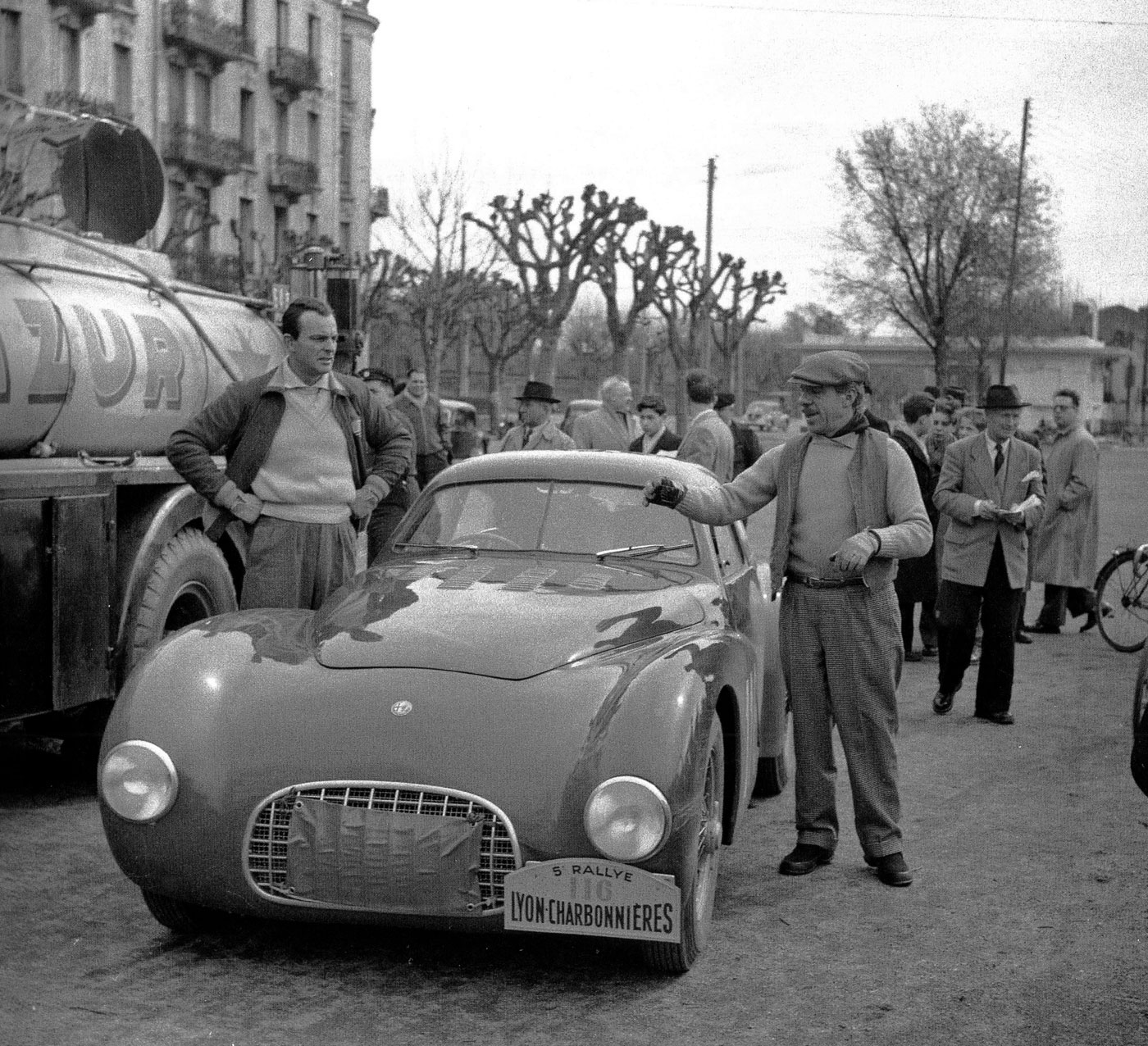
Identifying the coupes at different times and events is complicated by sudden changes in appearance. Here the 6C 2500 Comp coupe 92002 sports a new and different grille after it was sold to a gentleman racer.
Fangio was contracted to Alfa at the time, and in 1952 Alfa decided that instead of a prototype, newly crowned World Champion Fangio would be assigned to drive a new 1900 sedan, probably for PR reasons. Not sure of the logic here as he only finished 22nd and made no headlines for Alfa or the 1900.
6C 3000
The next chapter addresses an even rarer Alfa prototipi, the 6C 3000 of 1950. Don’t get this confused with the Disco Volantes, we aren’t there yet. This one is so mysterious there is no documented chassis (VIN) number. Dasse found Corrada Millanta photos of the chassis, still with a mock up engine. This time the body, also similar to the 6C 2500 Competizione coupe, was constructed by Touring rather than by Alfa Romeo which seemed to be the case with the earlier cars.
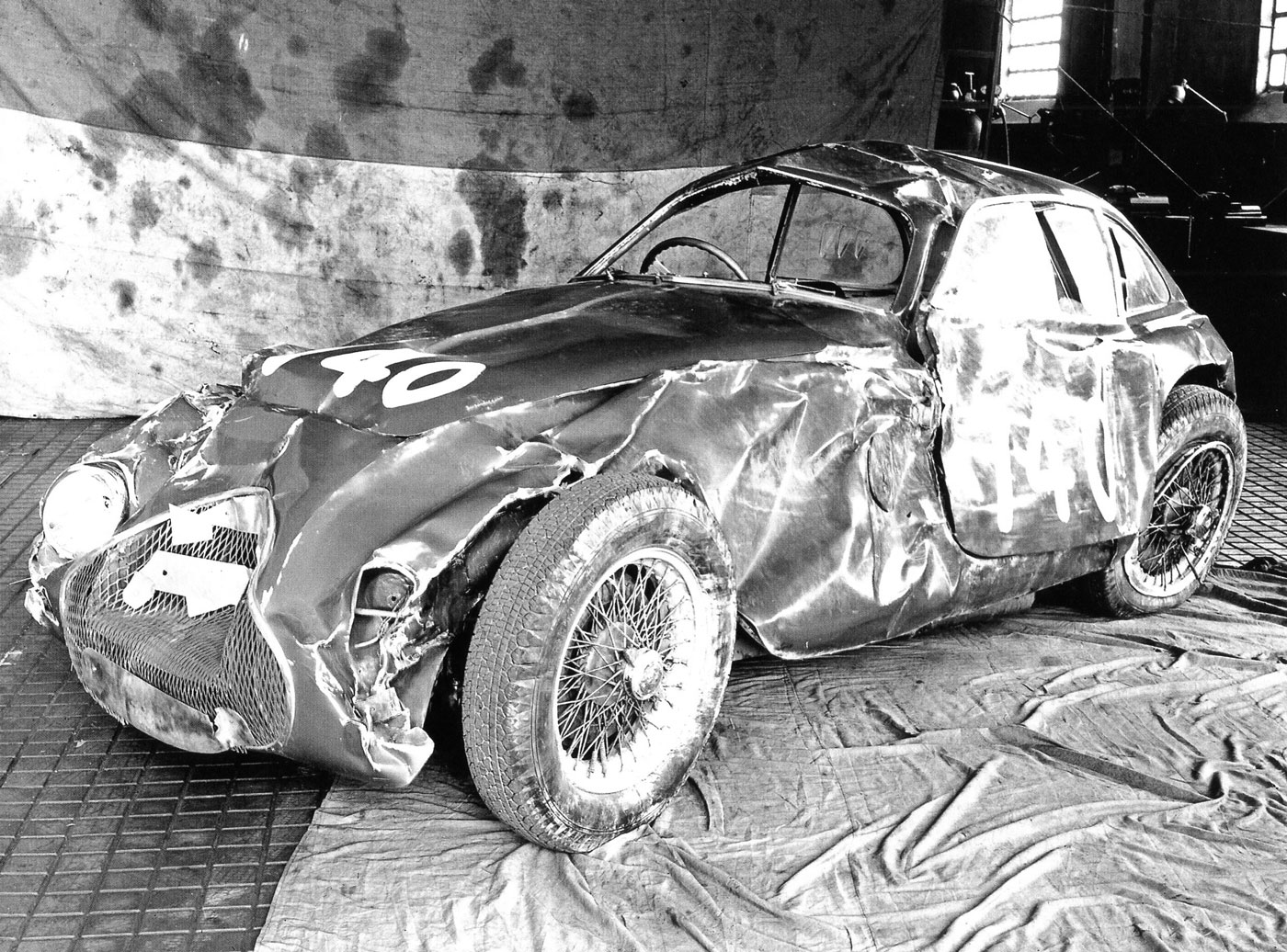
The 6C 3000 Comp Coupe with no VIN is seen here after it crashed at the 1950 Mille Miglia. Dasse does the detective work solve the riddle, maybe.
It was entered in the 1950 Mille Miglia driven by Sanesi, but went off the road with considerable damage to the car. Like Hercule Poiroit, Dasse unravels the mystery of the 6C 3000 with the special 3 liter engine and finds that it is possible the equally mysterious 6C 2500 chassis 920003. (allow us to remark that the history of the 6C 2500 Competizione coupes is also well documented (but lacking great photos)in the recent book, Alfa Romeo 6C 2300 e 2500 da Corsa, which we will review soon).
The Disco Era
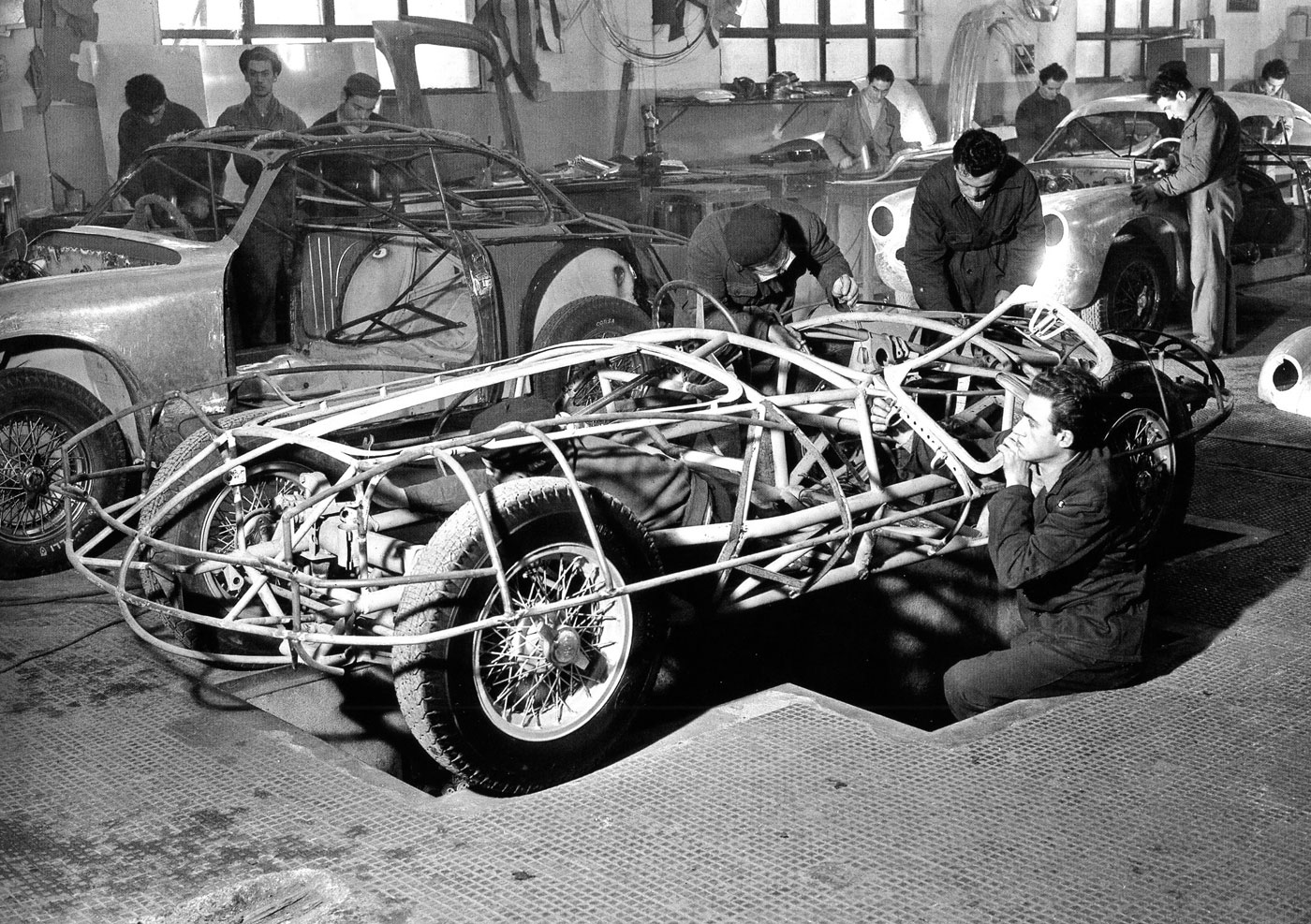
Instead of just glossy photos of show ready Discos, Dasse found and published many shots of the cars under construction.
I’m sure you have seen all the Disco Volante photos and there is an excellent book on the topic by C.F. Bianchi Anderloni titled Alfa Romeo Disco Volante, Automobilia 1993. What more could Dasse possibly come up with? Dasse’s pages are filled with photos of the Discos being constructed at Touring, with many detail shots and a few PR shots rarely, if ever, before seen. To be sure, Dasse includes those previously published, but for the most part they are superbly reproduced and in a larger format.
Giving credit where due, here are the Touring Discos as listed by Anderloni:
1359.00001 Spider, 4 cylinder, at Alfa Museum
1359.00003 Coupe, 4 cylinder, at Alfa Museum
1359.00002 Narrow sided spider, 4 cylinder, at Schlumpf
1361.00011 Spider, 4 cylinder, then a 6, at Biscaretti
1362.00012 Spider, 6 cylinder, history unknown
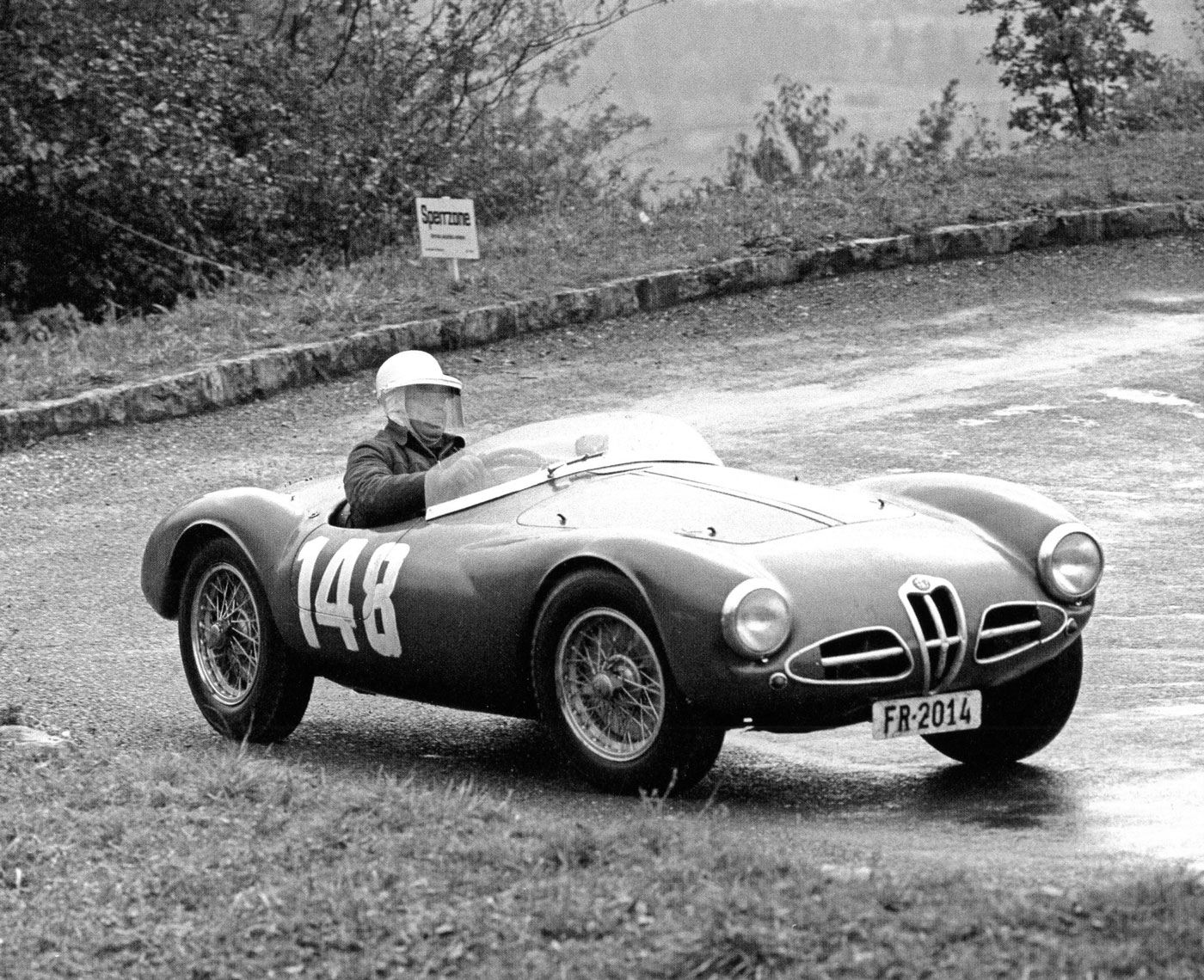
The ‘Fianchi Stretti’ (narrow sided) VIN 1359.00002 was sold off to privateers and is seen here with Walter Schweizer in 1959.
Dasse concurs with Anderloni’s research but notes that 00011 may have begun life with the short lived 6 cylinder, and that although neither author could find any trace of a 1362.00012, Dasse posits that there is mistake here and 1362 should probably be 1361. That number also would reflect the use of the larger 6C engine that would also feature in the later Colli coupes.
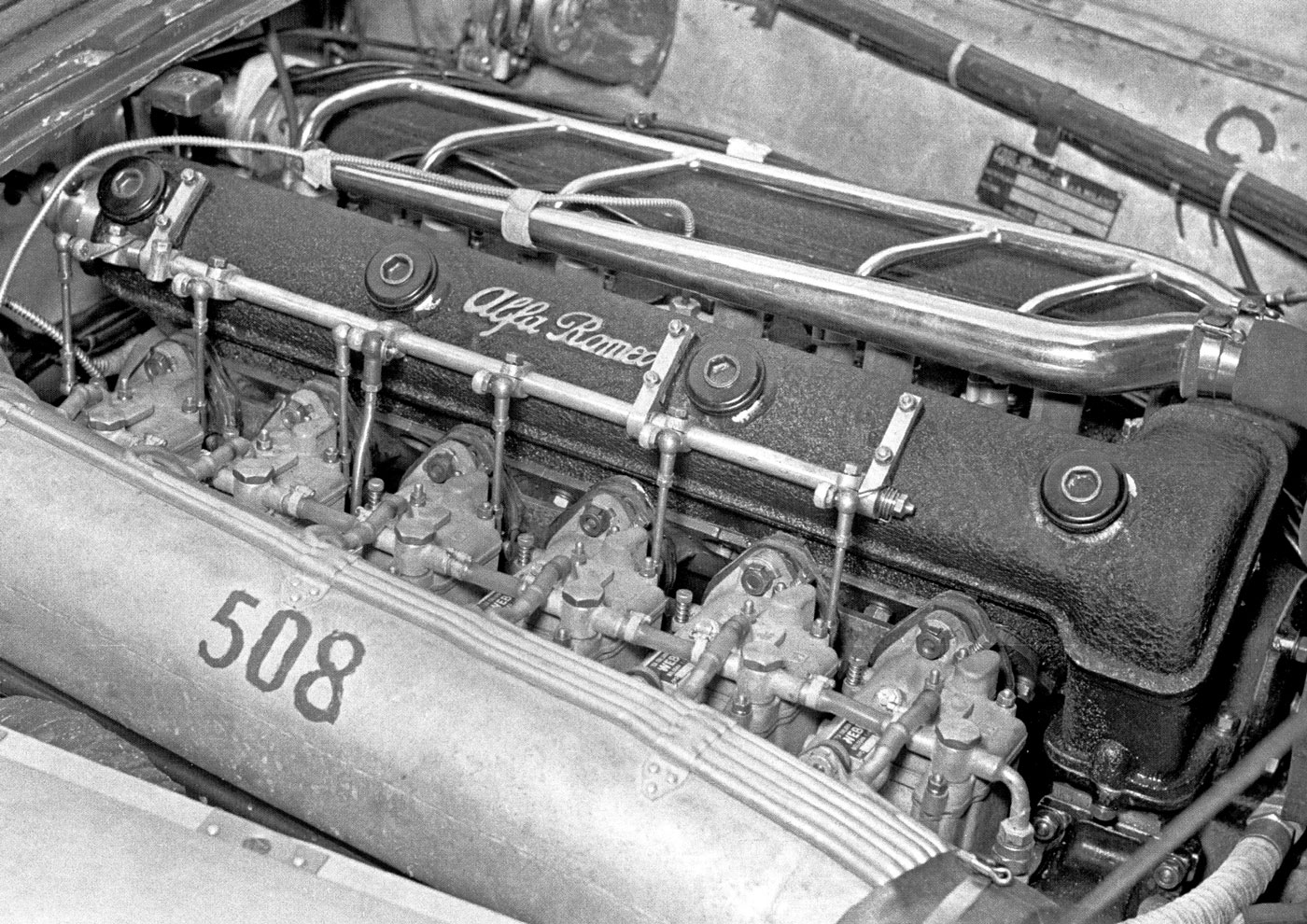
As far as we can determine, the 3000 CM engine was not developed for any further use after the cars were retired in 1954.
Then Dasse and company pummel us with 130 pages of photos and text, all in reference to the known Disco Volantes. Wonderful.
6C 3000 CM Those Colli Coupes and Spiders
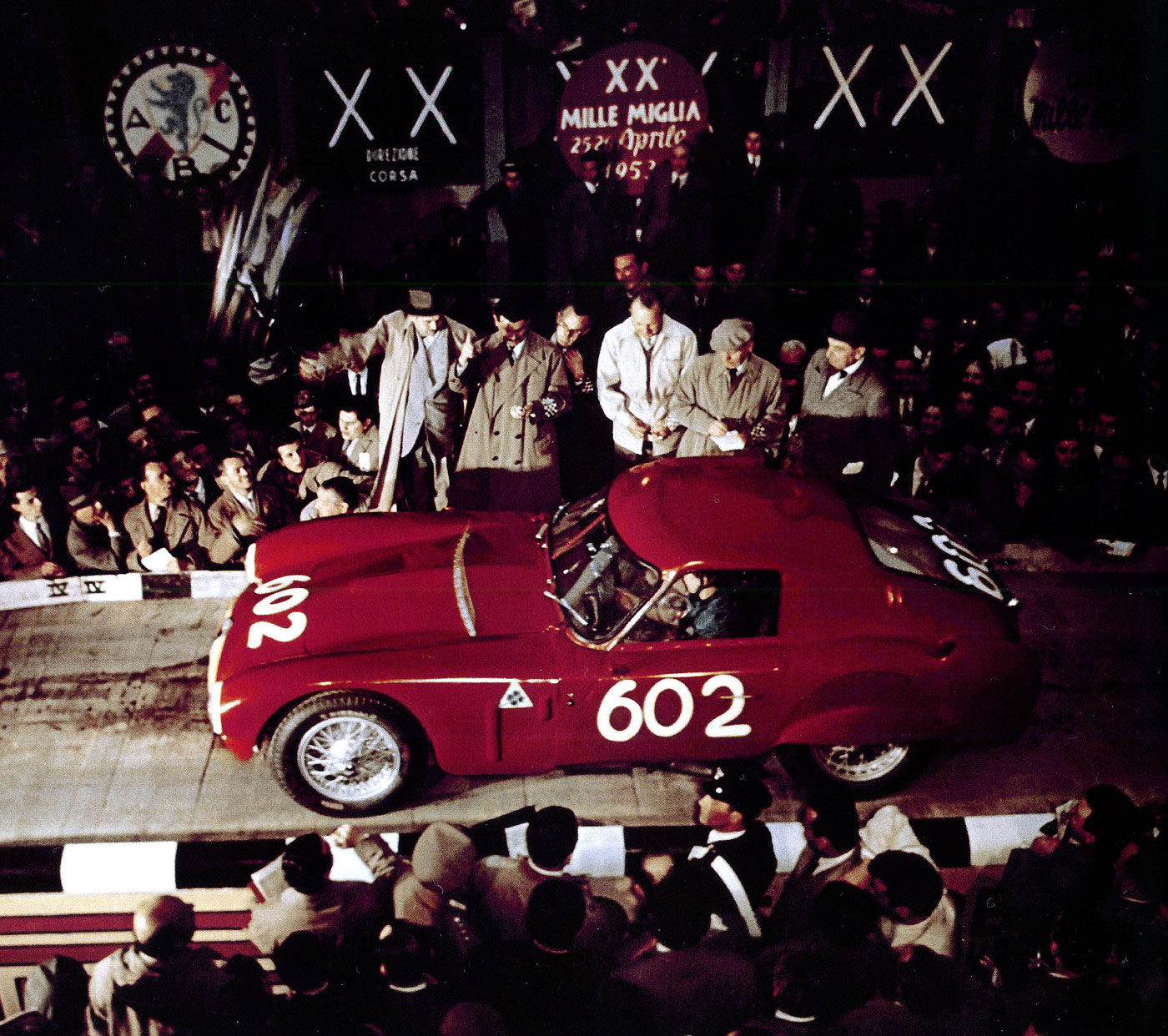
Volume 1 allows us to follow Fangio’s years with sports racing Alfas. A rare color shot of Fangio and Sala on the starting ramp at Brescia in 1953 with the Colli coupe; he would finish second despite a broken tie rod. The Volumes are full of great photography.
There were originally six Colli bodied coupes on the CM chassis (all 3500cc)
1361.00123 Mille Miglia 1953 team car
1361.00124 Mille Miglia 53 team car Fangio/Sala, n 602
1361.00125 Mille Miglia team car, sold to Bonnier 1955 rebodied as a Zagato spyder
1361.00126 Mille Miglia team car, Boano Peron car, then to Wessels and rebodied as Colli coupe
1361.00127 spider, won at Merano, crashed by Zanardi, now in Alfa Museum
00128 PF show cars
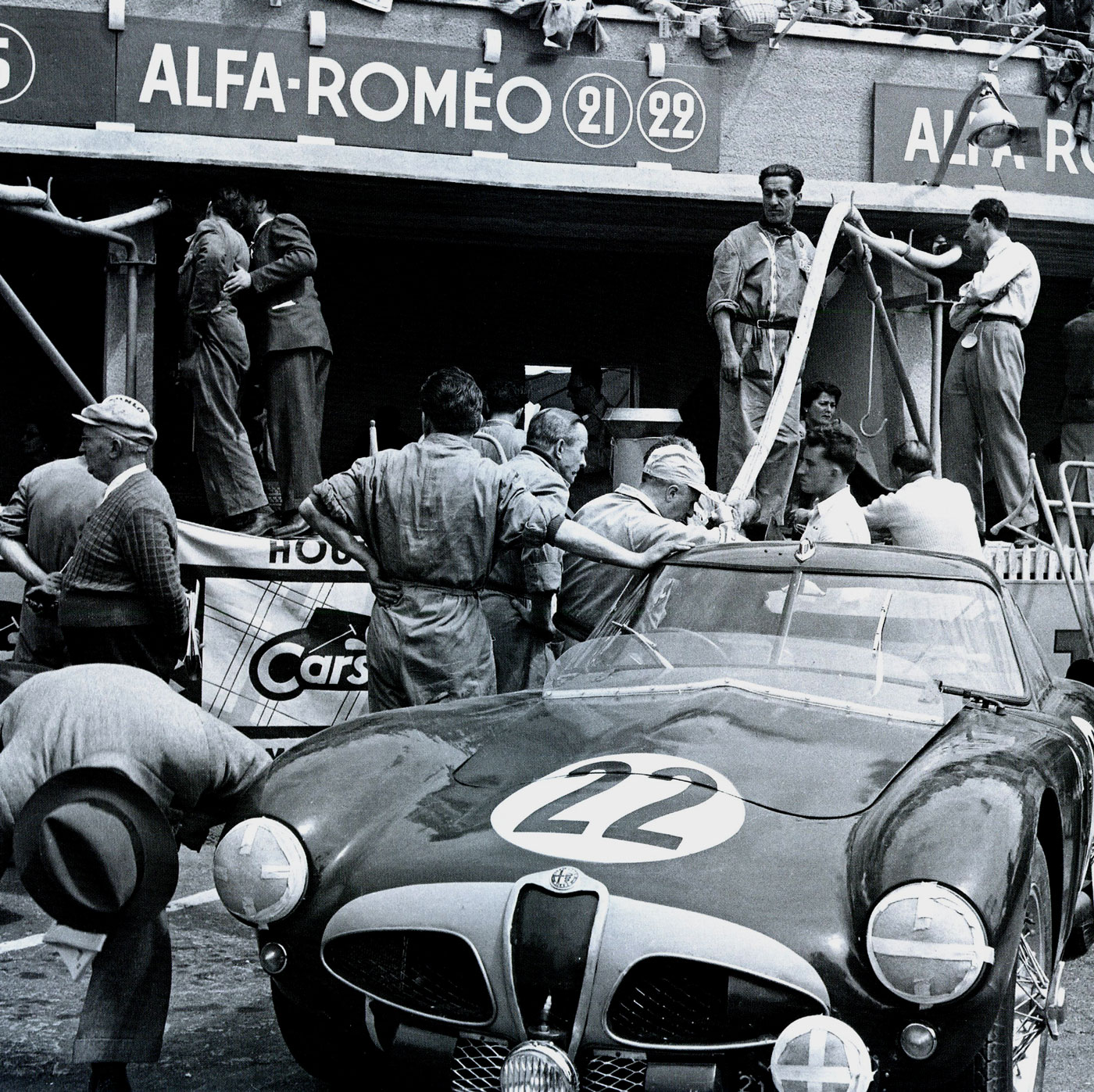
At Le Mans where Fangio co drove with Marimon. The second place at the Mille Miglia was at least worthy, but at Le Mans in June his Alfa Colli had to be retired a few hours after the start. Fangio was not pleased.
In the 1953 Mille Miglia Fangio drove one of the Colli coupes (VIN 1361.00124) to second place complete, or incomplete, with a broken tie rod. He recalled in his autobiography, “At Florence, I managed to take the lead. But then there was too much play in the steering, which had the curious effect of making it impossible to steer with the left wheel. Only the right wheel answered. Imagine having to take the endless succession of Appennine curves, having to slow down to a ridiculous pace for each one!” This was followed up by another disappointing failure at Le Mans, as the Colli coupe retired with piston failure.
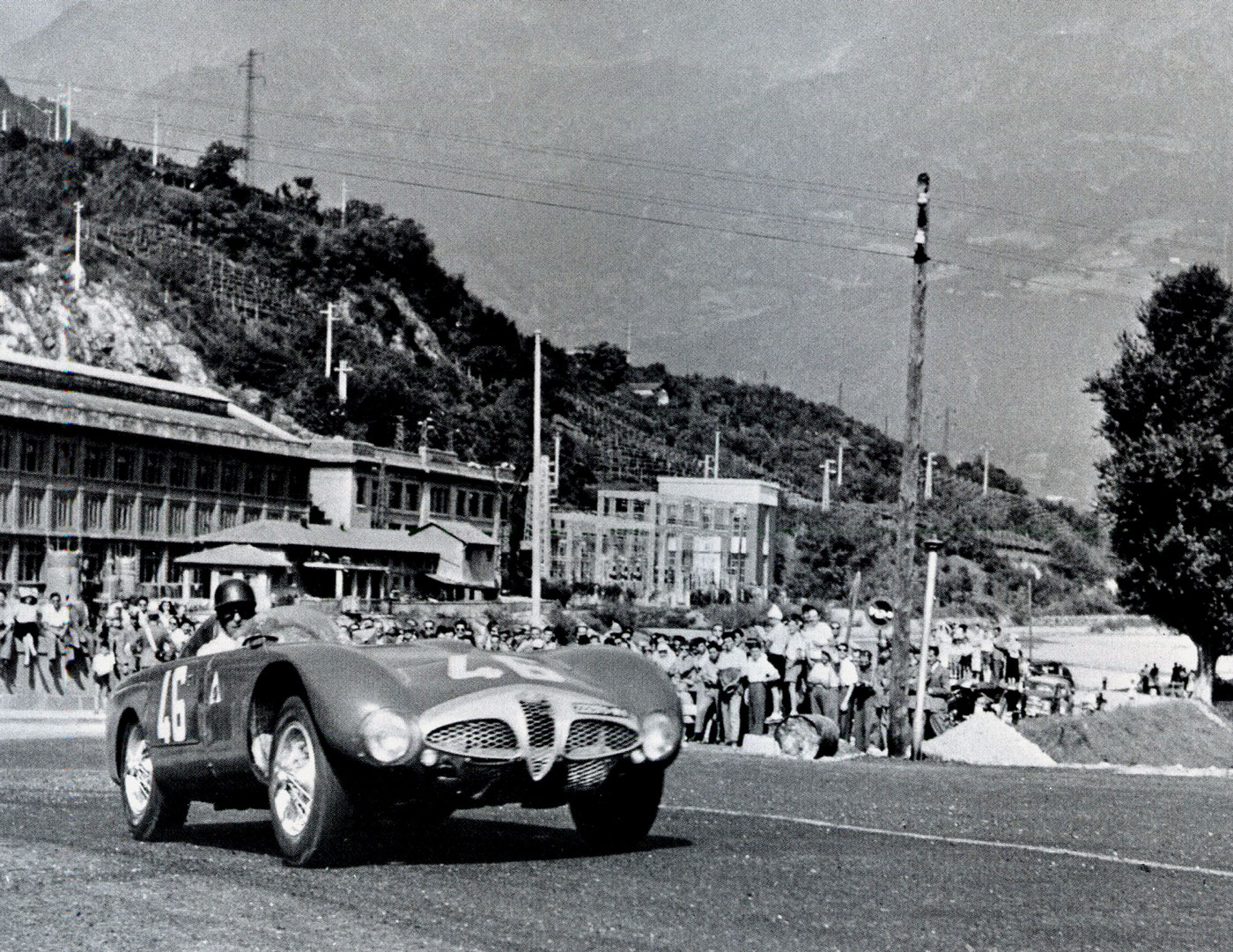
Fangio’s final race with Alfa was a win with the open version of the 6C 3000 CM at the Supercortomaggiore at Merano in September of 1953.
The Colli coupe gave way to the Disco spiders, and in his last drive for Alfa Romeo, Juan Fangio drove AR 3000 CM 00127 to victory at the Grand Premio Supercortemaggiore at Murano on September 6 1953. Ironically the same car, driven by test driver Zanardi, suffered a severe accident in June of 1954. The photos of the accident damage were taken by Alfa Romeo as with almost all such accidents and are very much a part of Dasse’s book.
Volume 1 ends with splitting up the fascinating story of the six 3000 CM Alfas to continue in Volume 2. We’ll also see how Alfa was pulling out of racing but continued to create racing prototypes, this time with the new Giulietta. Next week, same time, same station.
Alfa Romeo Prototipi 1948–1962
The book consists of two volumes,
totaling 600 pages:
Alfa Romeo Prototipi 1948–1962 – Volume 1,
300 pages, 311 black and white photos and 28 colour photos
Alfa Romeo Prototipi 1948–1962 – Volume 2,
300 pages, 302 black and white photos und 49 colour photos
Size: 29 x 24,8 cm
Weight: 3,2 kg
Language: English – German
Author: Patrick Dasse
ISBN 978-3-87166-094-8
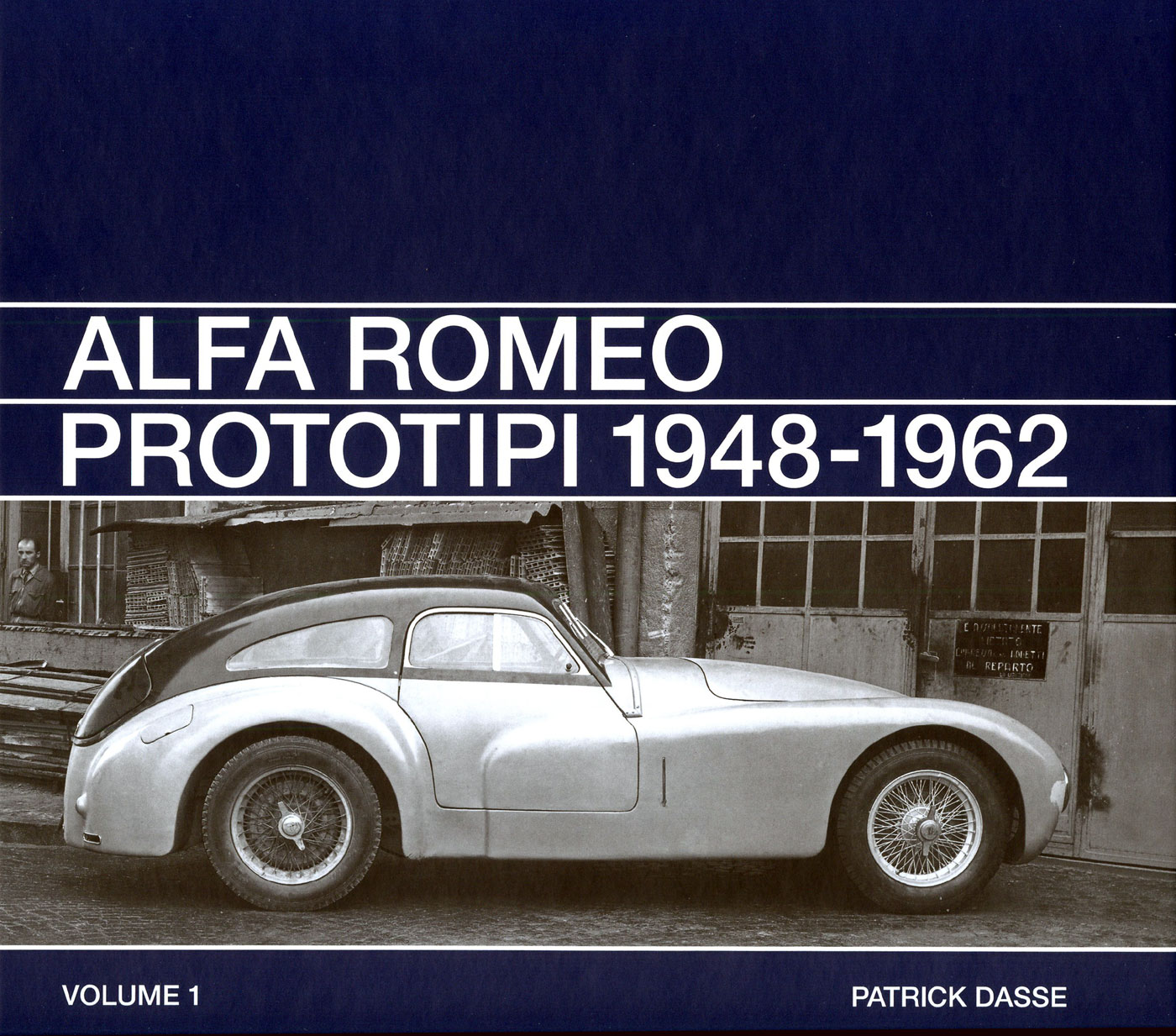
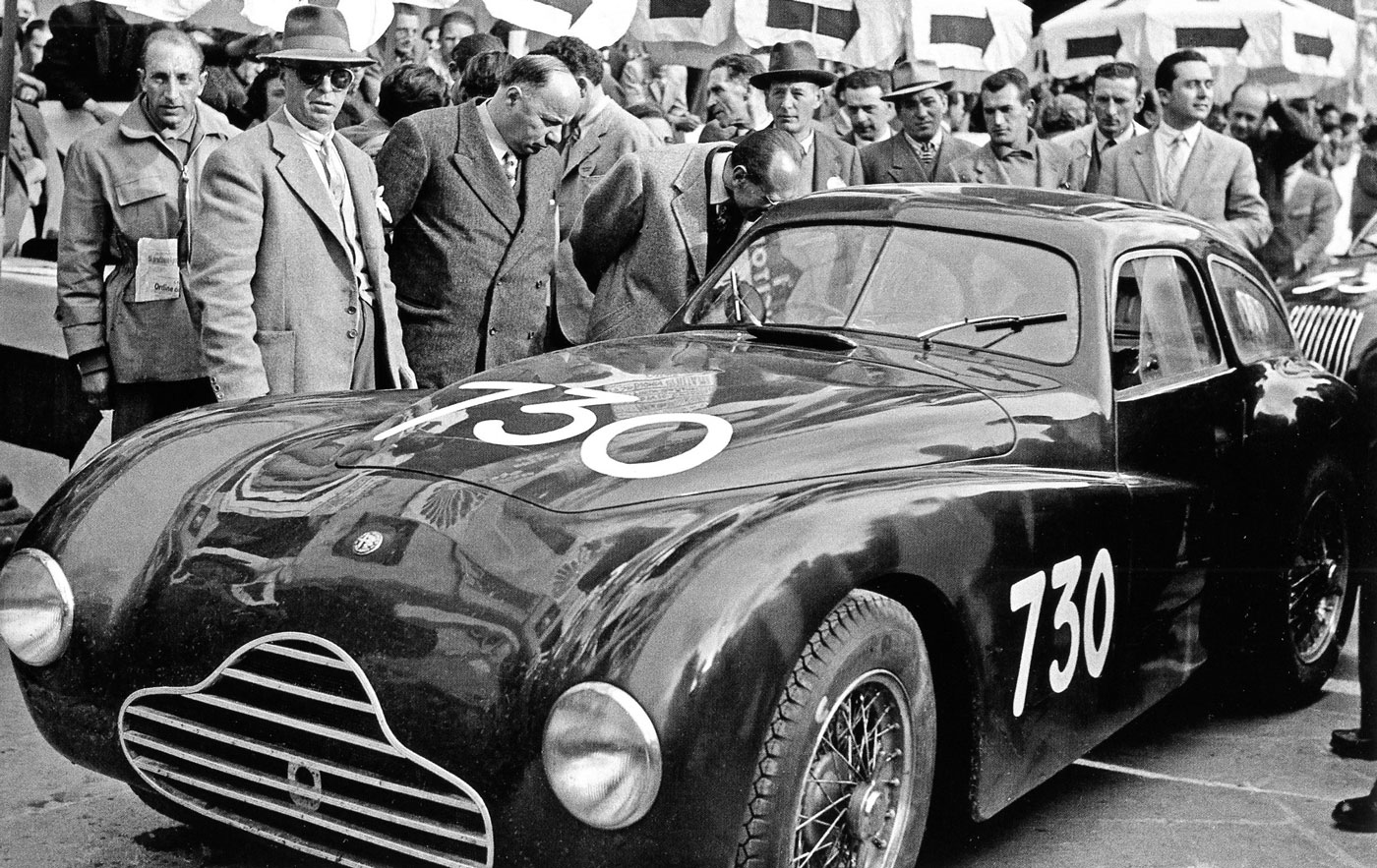
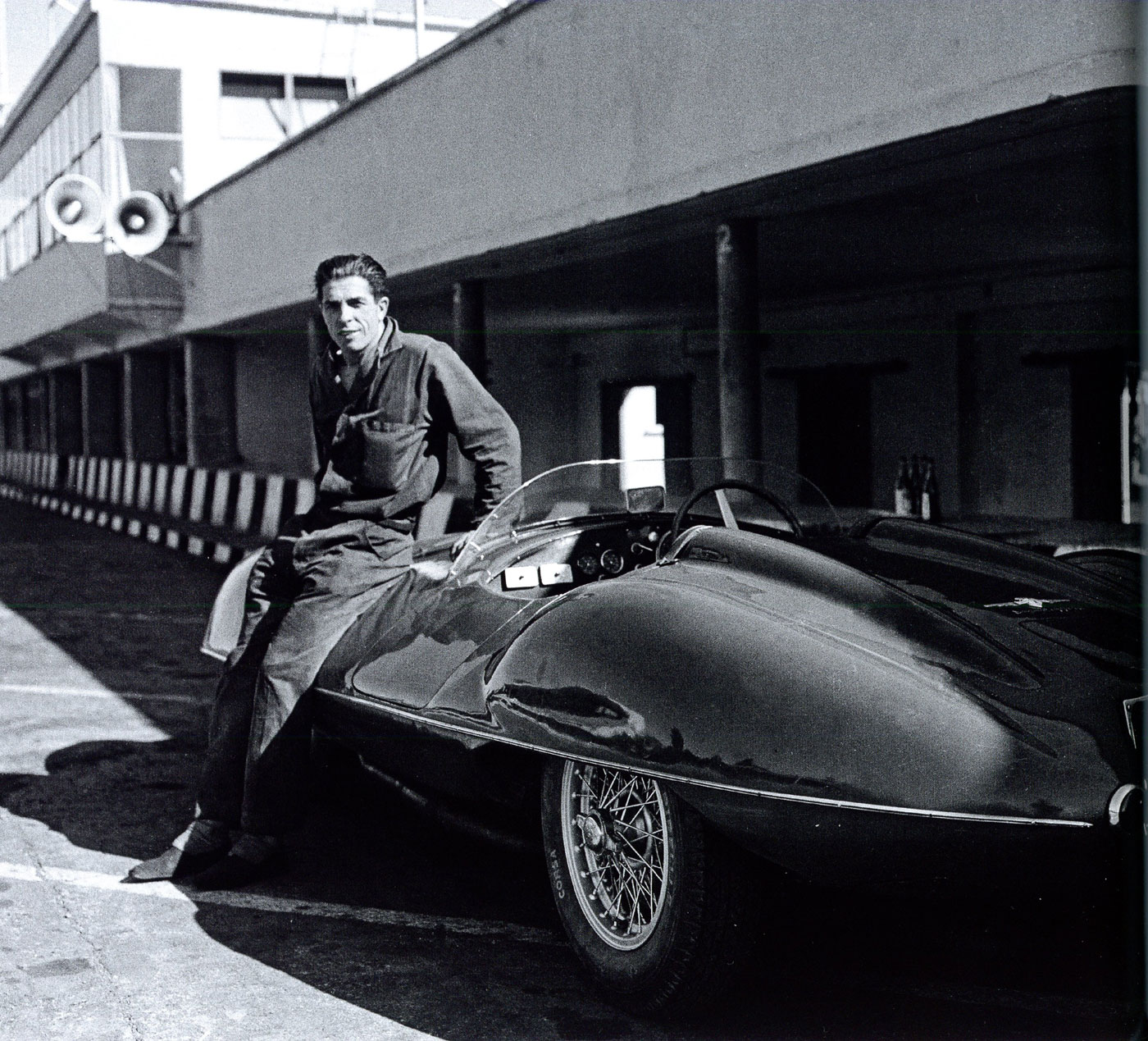
I recently purchased the two volume set, well worth the price. Well produced, the information is well beyond any other Alfa books I own, which is many. Well done!
If you love Alfa Romeo than just go and get these books.This series of books keeps getting better.
La foto VIN 1359.000001 ulteriori test a Monza, figura il grande meccanico Sala Giulio, detto Saletta, un personaggio unico per capacità, conoscenza, gentilezza all’interno dello staff di meccanici presso il Dipre-Espe con a capo ing. Nicolis. Indimenticabile.